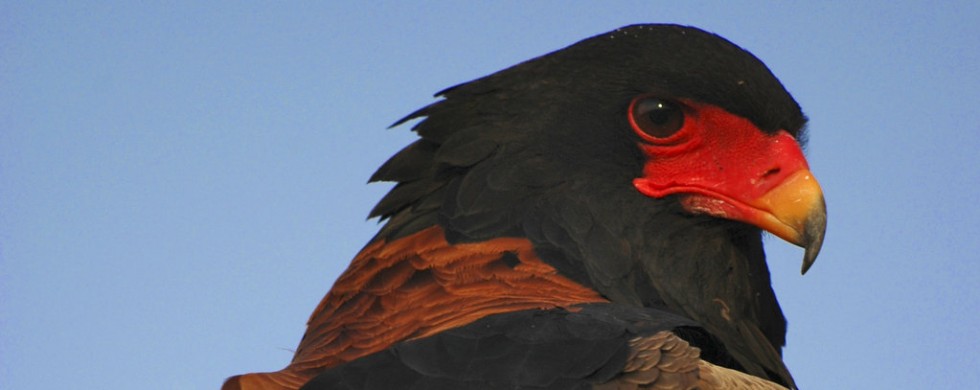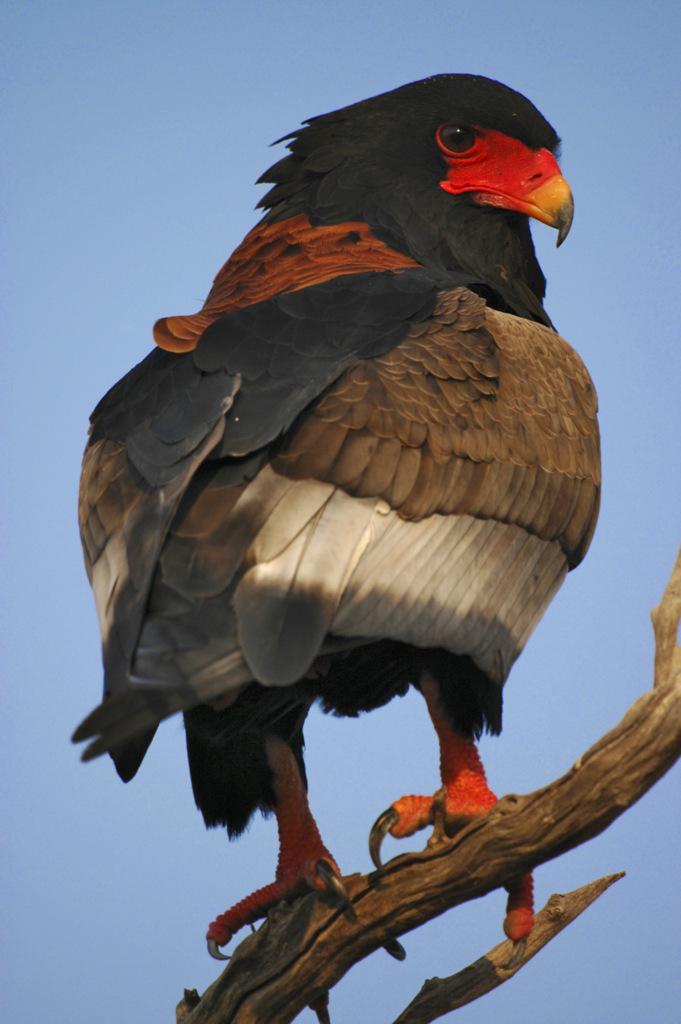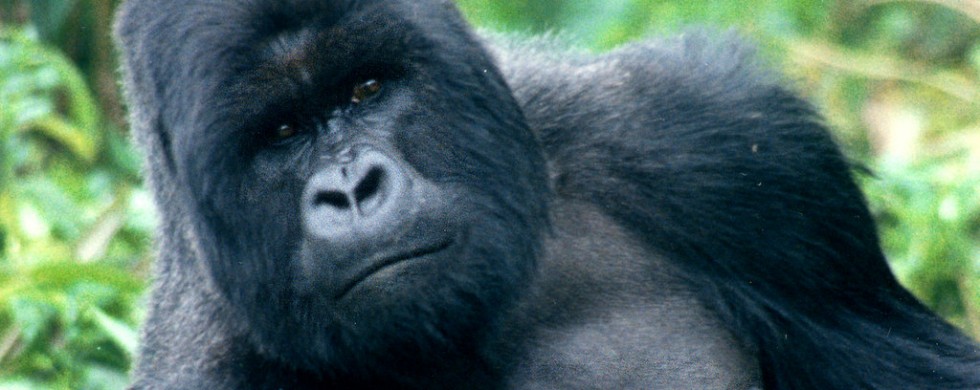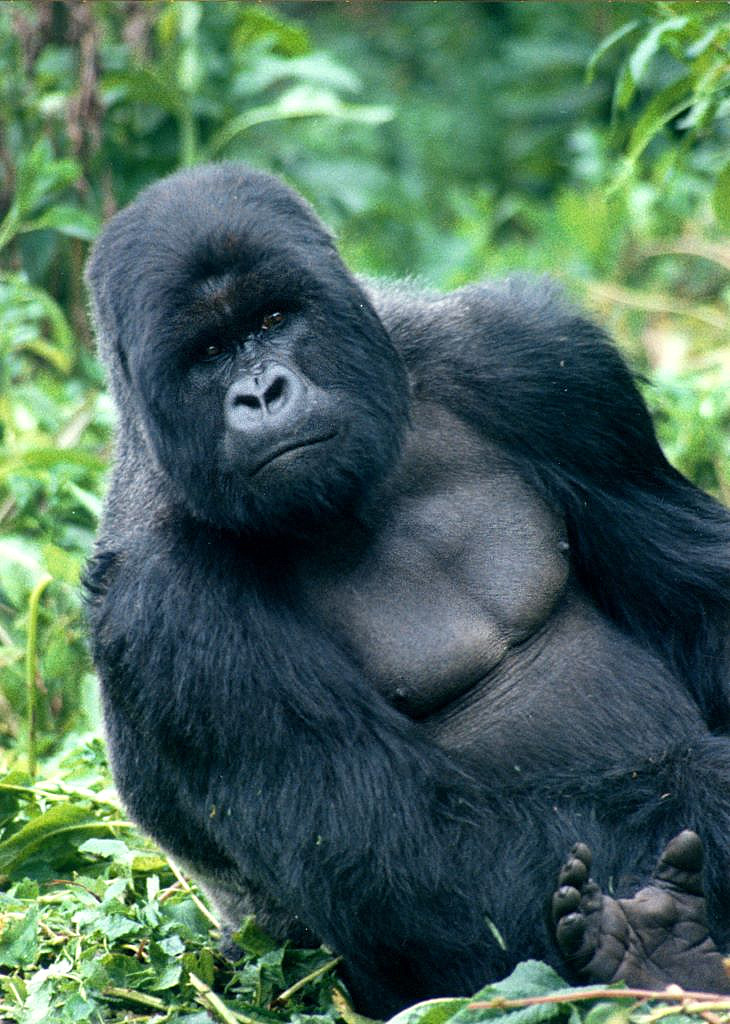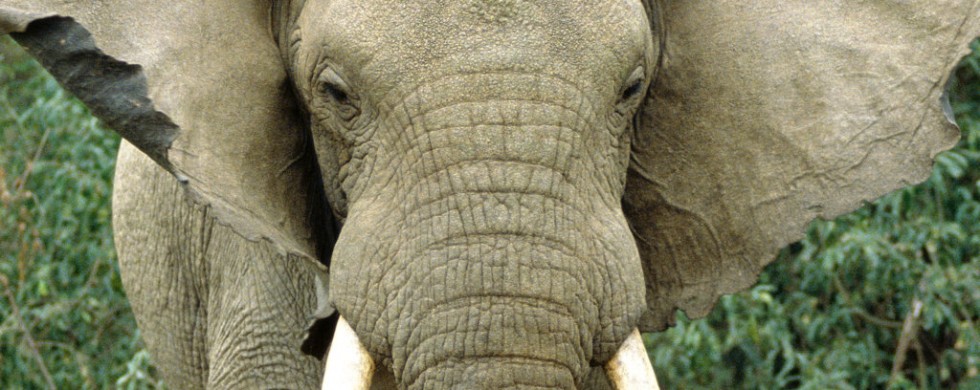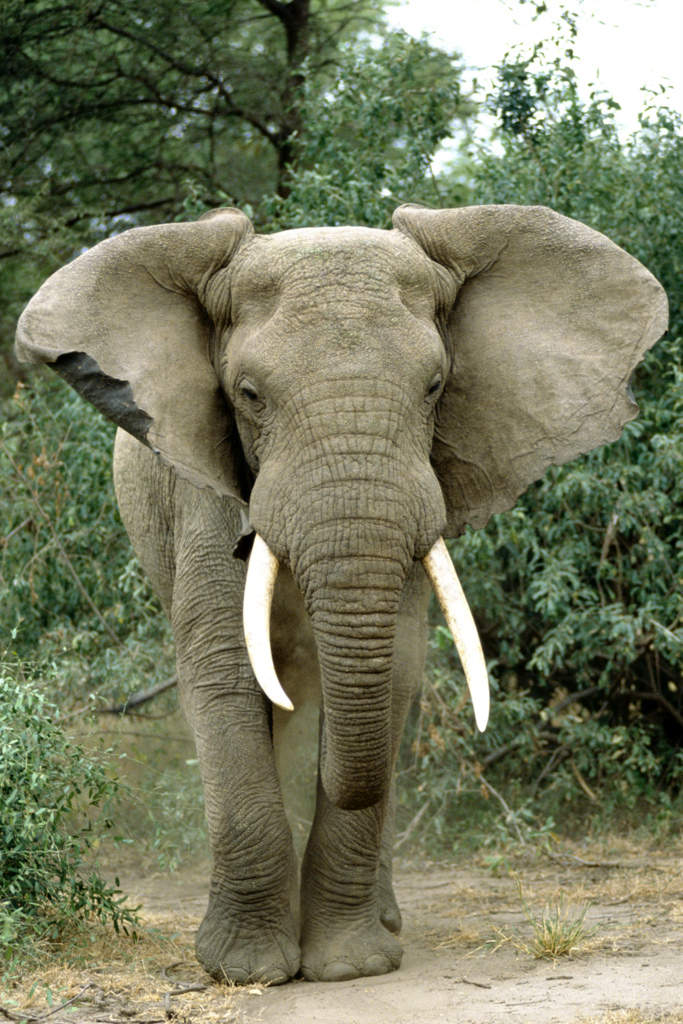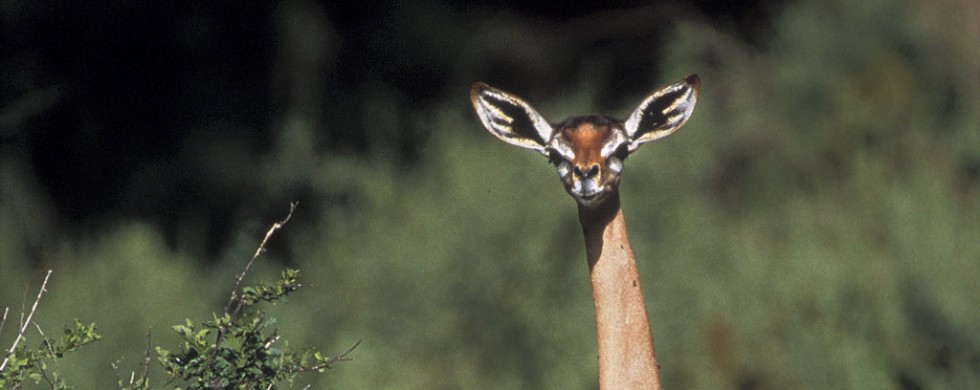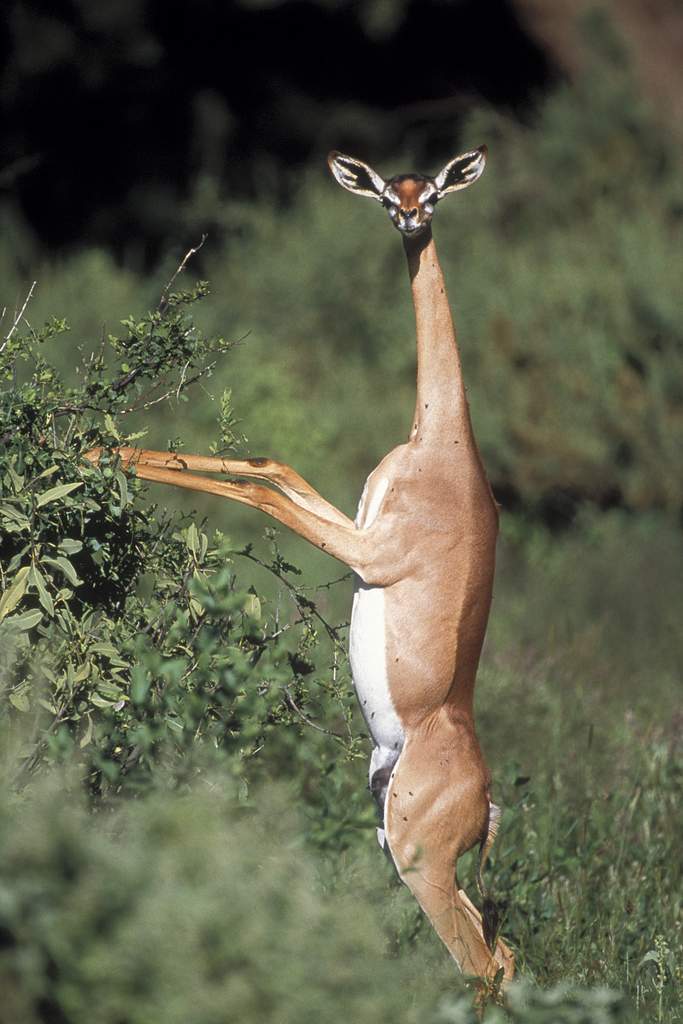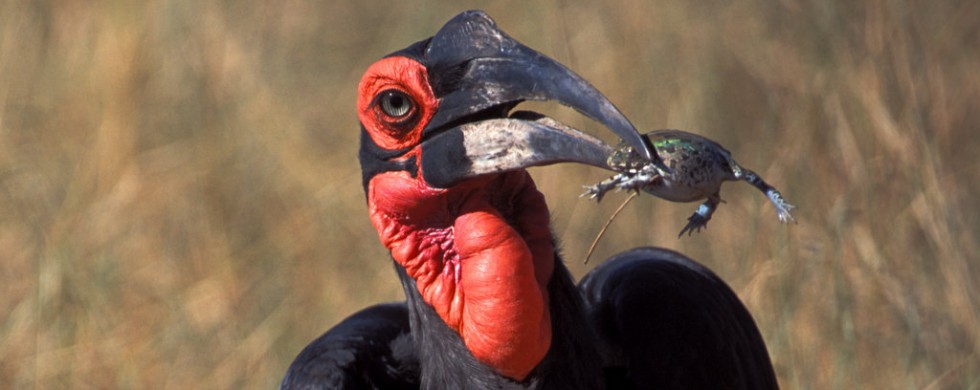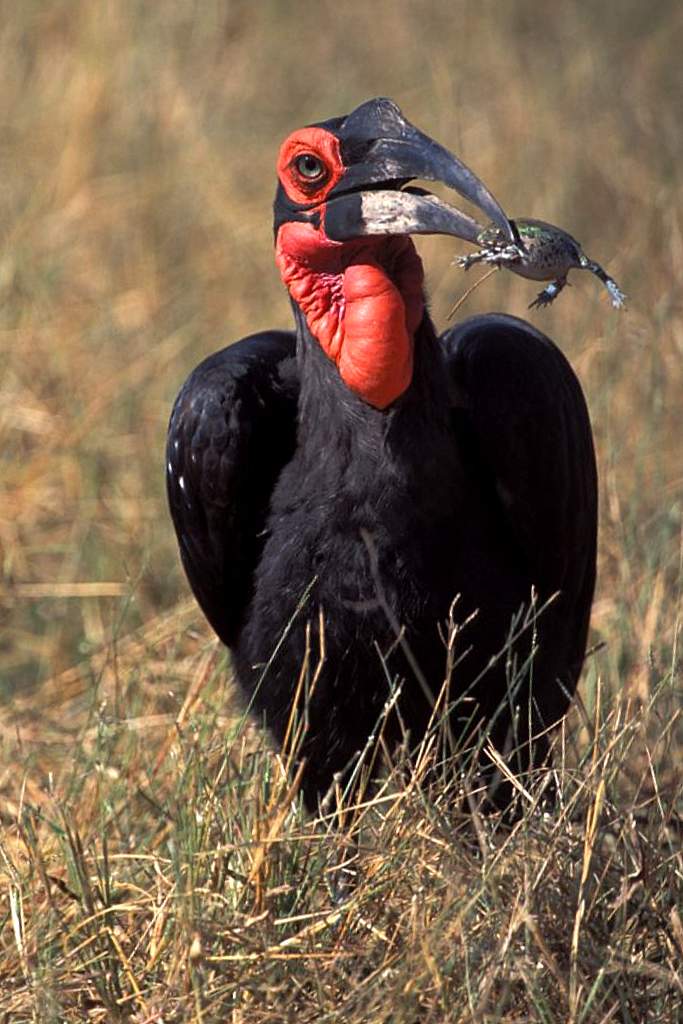15
Shot of the Month – September 2009
I have to admit that I am a bit shallow when it comes to my interest in birds – photographically, I am most interested in the pretty ones. True birders seek out all avian sizes and shapes and can be enraptured by a rare, but very dull, brown species of sparrow. I, on the other hand, only seek out colorful cranes, resplendent rollers, brilliant bee-eaters, or other alliterative combinations of bright-colored fowl.
While I admire the majestic nature of eagles and hawks most are hues of tan and browns and would look equally well in a black and white photo as well as one in color. There is one eagle however that makes a brilliant exception to this rule –the Bateleur Eagle. The Bateleur’s black head is strikingly offset by a red face and bill and the banded tan, white, and black body is accentuated by brilliant red legs and feet. For years I would often spot the bright red feet signaling from high up in a tree but invariably I could not get a shot as the rest of the body was hidden behind leaves and branches. I couldn’t believe my luck when I found this fellow with his mate, they pair for life, in a dead tree in Botswana. They were gracious enough to sit there for over an hour as I shot hundreds of images with nary a leaf or branch obstructing my view!
“Bateleur” is a French word that means “tightrope-walker” — in flight the Bateleur tips its wings from side to side, looking like a high-wire acrobat catching his balance. The eagle has a very short tail so this motion assists in making turns. The short tail however allows the Bateleur to do sideways barrel rolls and other spectacular aerobatics.
The eagle can spend eight to nine hours a day in the air searching for food and can cover up to 250 square miles looking for snakes, mice, birds, and carrion.
The Bateleur eagle has it all – noble in stature and form with striking crimson highlights — now that’s my kind of bird.

